BITS Pilani Engineers’ Solar-Powered Home Saves Over 2 Lakh Litres of Water
Engineers from BITS Pilani, Ashis Panda and Madhulika speak about their sustainable 'dream home' that is made with stones, lime, jaggery, and wood - similar to old mansions and palaces in Rajasthan.
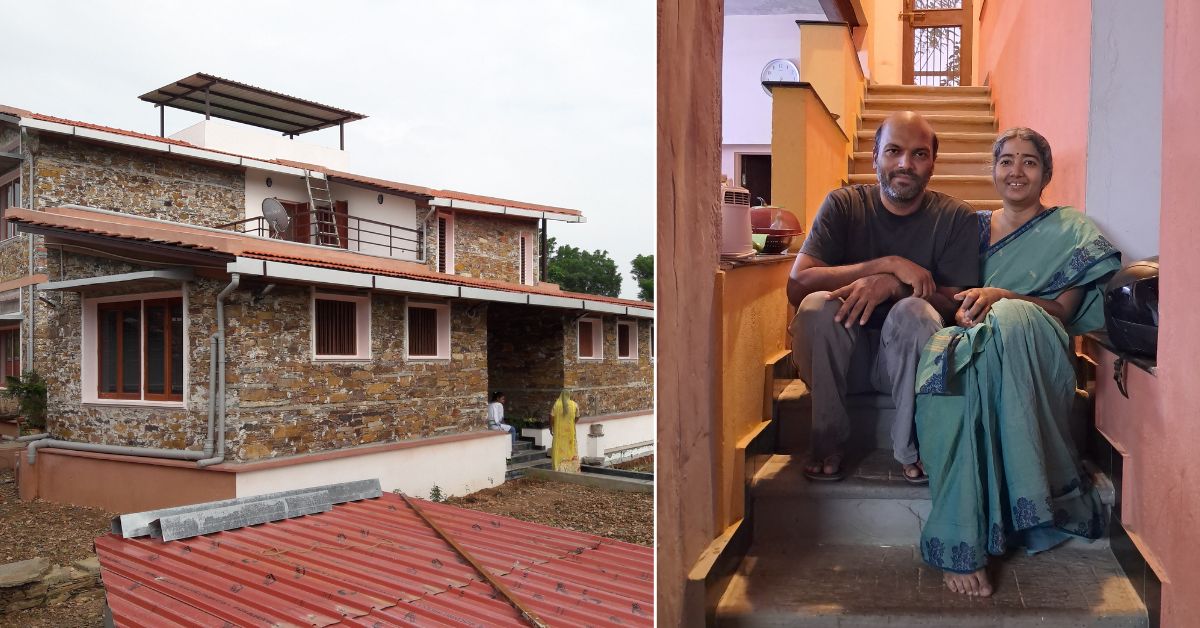
In 2004, Odisha’s Ashis Panda got married to his college sweetheart Madhulika whom he met at BITS Pilani, Rajasthan. Like any newly wedded couple, their forage for a sweet home started soon after. However, they did not want to live in conventional cement brick houses.
Native to Bhubaneswar and Vijayawada, the couple decided to settle thousands of kilometres away in rural Rajasthan, away from the hustle of metros. And there, they built their house from lime and stones instead of going for a concrete structure.
From the foundation to the interiors, the couple utilised local materials like lime, balwada (slate), and ghughra (phyllite) stones, giving their sustainable house a distinct character.
Instead of cement, they used stone slabs for the steps, roof, and balcony of the house. Stones were also the primary building material for the walls, while lime was used for plastering, masonry, and the roof.
Here’s how their dream home came to be.
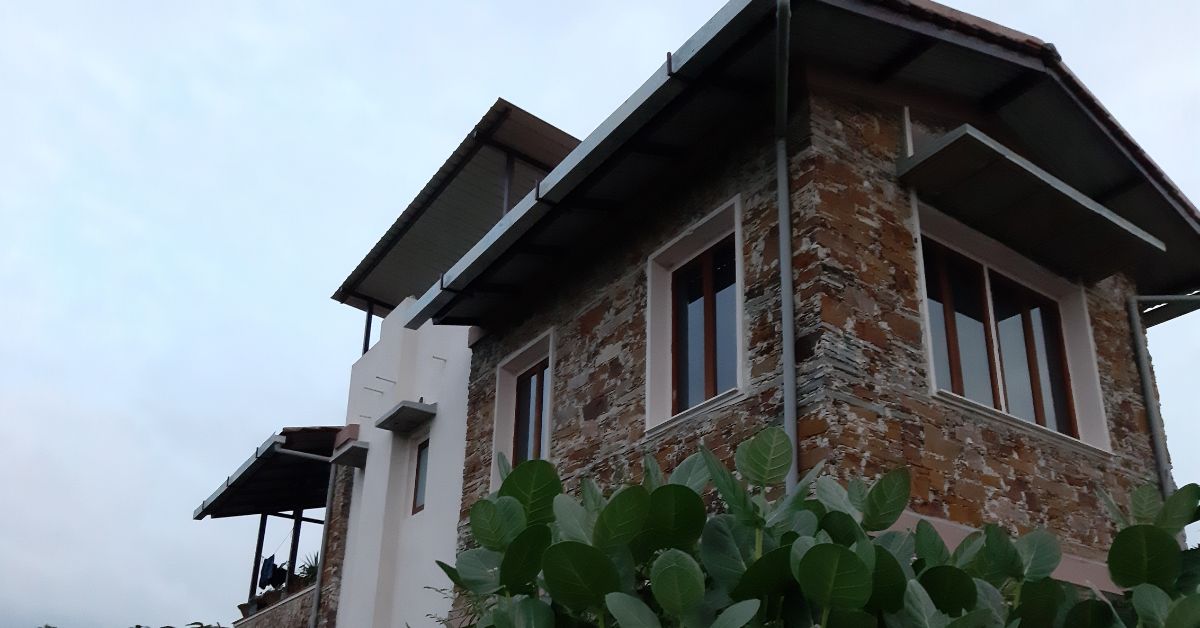
From cosmopolitan cities to rural tranquility
While Madhulika (43) is a computer science graduate, Ashis (42) pursued civil engineering. Over the years, they worked with several non-profit organisations when their interests shifted to rural development, social, and environmental fields.
Madhulika, who pursued a master’s in telecommunications from the US, tells The Better India, “After our marriage, we have lived in different cities and countries as well. But we had decided to settle in Rajasthan while we were still in college.”
Before settling in the small town of Dungarpur in South Rajasthan, they lived in several cities like Anantpur, Udaipur, Chittorgarh, Bhilwara, and a few villages. “We’ve always lived in state capitals, so we wanted to find a quiet place without traffic noise. We discovered this town to be peaceful,” Ashis, who currently heads an NGO Sambhaav Trust, tells The Better India.
In 2012, the couple purchased the land and began researching ways to create an environmentally friendly and sustainable house. They spent 10 months on this research, during which they consulted with several architects and studied houses as old as 150 years.
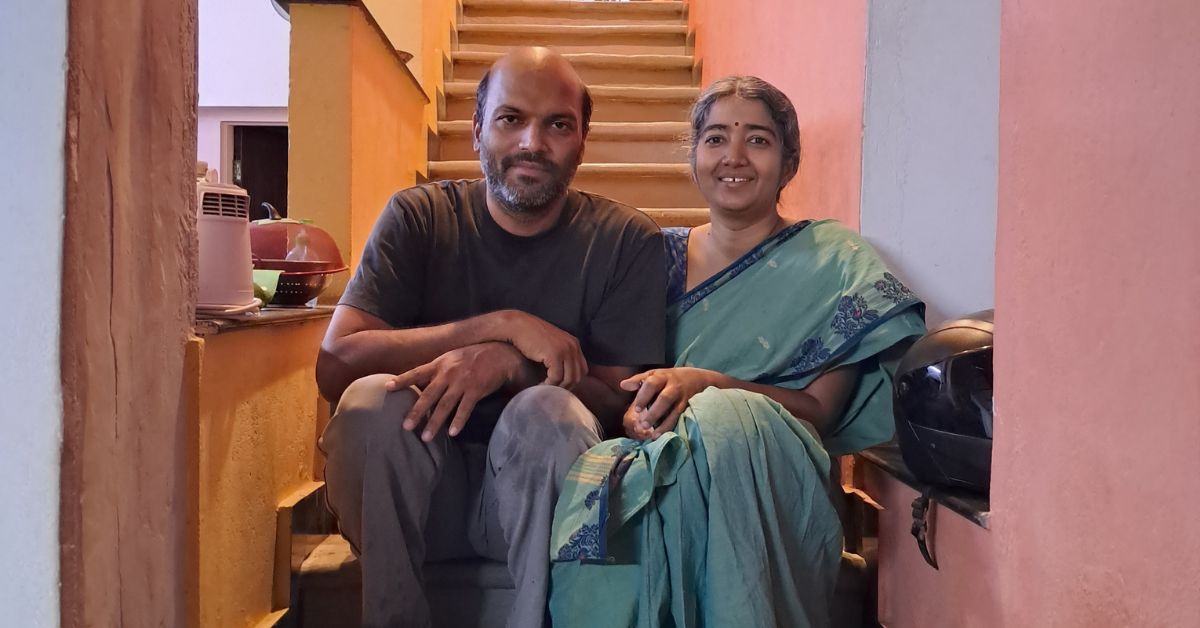
“We wanted to learn about the traditional materials used by the local people. We discovered that in Rajasthan, old houses, palaces, and mansions were built with stone and lime. These structures, despite not using cement and steel, have endured for a long time and outperformed RCC-built homes, which often deteriorate in just a few decades,” he says.
So Ashis and Madhulika employed a traditional roof construction method. They mixed lime, jaggery, fenugreek, and ropes for this purpose. “This makes the roof cool and waterproof,” says Ashis.
Constructed in an area of 3,200 square feet, the two-storey house features two covered verandahs, a dining area, an open verandah, three bedrooms with two attached washrooms and one common washroom on the ground floor.
On the first floor, there’s a storeroom, a balcony, a covered verandah, an open terrace, and a bedroom with an attached pantry and washroom. Additionally, the property includes a parking area with recharge pits, a black water treatment tank, and a grey water treatment tank.
And after 16 months of construction, the couple finally moved into their home in 2017.
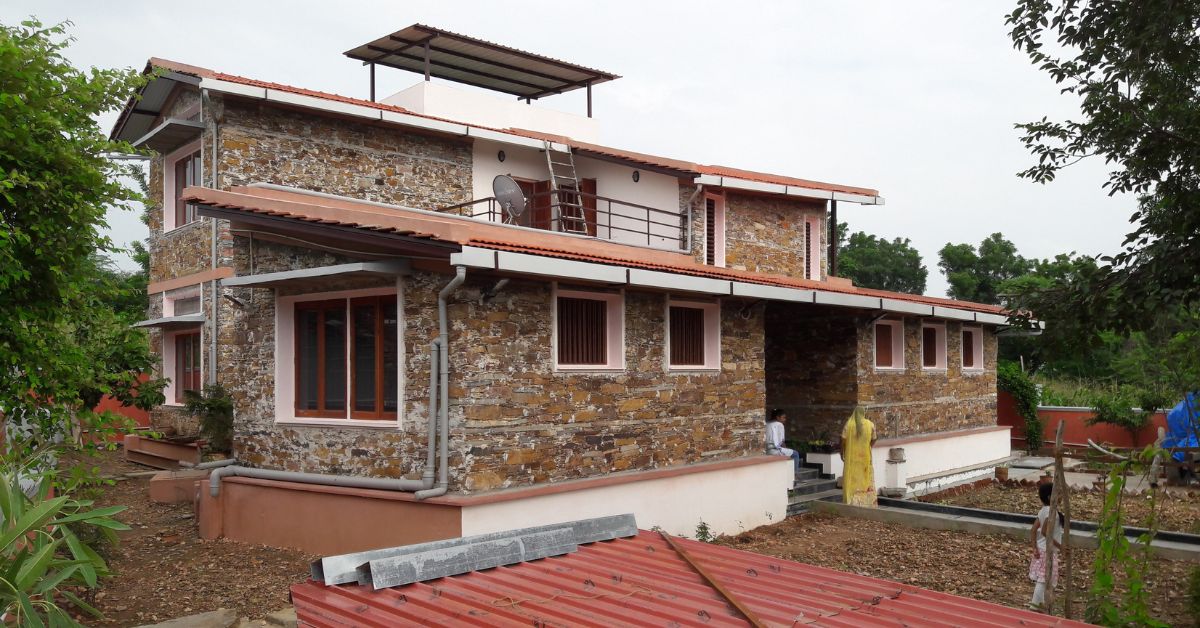
Building a green oasis in Rajasthan
During the construction, the couple made sure to have good ventilation and lighting. They installed windows in the West direction to let in ample light. Because the South direction gets the most sunlight, the couple positioned their bedrooms in the North-East and South-East directions.
“Rajasthan remains hot throughout the year except December and January. So, avoiding heat was our primary concern. The temperature inside our room remains 5 to 7 degrees cooler than the outside. We do not have air conditioners at all. Meanwhile, in winter, we bask in the sunlight in our South and South-East facing balcony and verandah,” adds Ashis.
Additionally, the couple has planted many trees in the area to regulate the house’s temperature. They also cultivate over 200 varieties of seasonal vegetables and fruits — such as bottle gourd, tomatoes, chillies, bitter gourd, lemons, grapes, bananas, and pomegranates. These provide 80 percent of their vegetable and fruit requirements.

Taking it a step further, the couple collects all the rainwater that falls on their house and treats their greywater. Ashis informs that they use a simple UV-UF, non-reverse osmosis (RO) water purifier to filter rainwater, which they then use for drinking and other household purposes. Thanks to this, they manage to conserve 2.25 lakh litres of water every year.
“Of which, we save 1.35 lakh litres of rainwater and 90,000 litres of greywater. This meets our water needs for cooking, drinking, cleaning, and gardening purposes throughout the year. We save this water for emergency situations as well. For example, when our borewell dries up during hotter months like May and June. Domestic water supply is erratic in these summer months,” says Ashis.
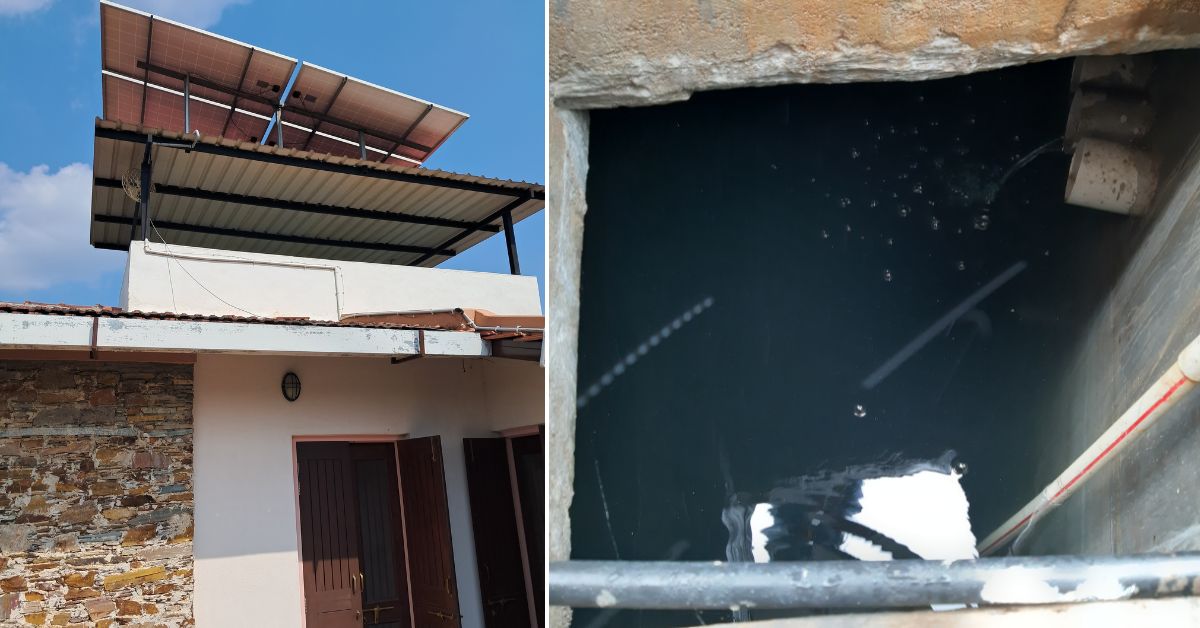
They further share that they have also installed solar panels of 3 KW capacity. “We rely on solar energy during the day, the extra units are funnelled into the grid which we utilise during the night. We have contributed a net of 3,068 KWH units to the electricity grid, this is after subtracting what we have consumed over the last 25 months,” he adds.
Ashis mentions that their house construction and finishing works cost Rs 1,800 per square foot. Their home has inspired 840 people from all over the country to seek guidance from them.
“Our purpose was not to get any attention. We just invested our time and energy to build the house of our dreams. Today, we have helped many families build sustainable homes as per the locally available material and climatic conditions. It gives us immense pleasure to be able to help people adapt to a lifestyle that is environmentally conscious,” he says. If you found our stories insightful, informative, or even just enjoyable, we invite you to consider making a voluntary payment to support the work we do at The Better India. Your contribution helps us continue producing quality content that educates, inspires, and drives positive change. Choose one of the payment options below for your contribution- By paying for the stories you value, you directly contribute to sustaining our efforts focused on making a difference in the world. Together, let’s ensure that impactful stories continue to be told and shared, enriching lives and communities alike. Thank you for your support. Here are some frequently asked questions you might find helpful to know why you are contributing?

You can reach out to Ashis at [email protected]
Edited by Pranita Bhat. All photos: Ashis Panda.
This story made me
- 97
- 121
- 89
- 167













